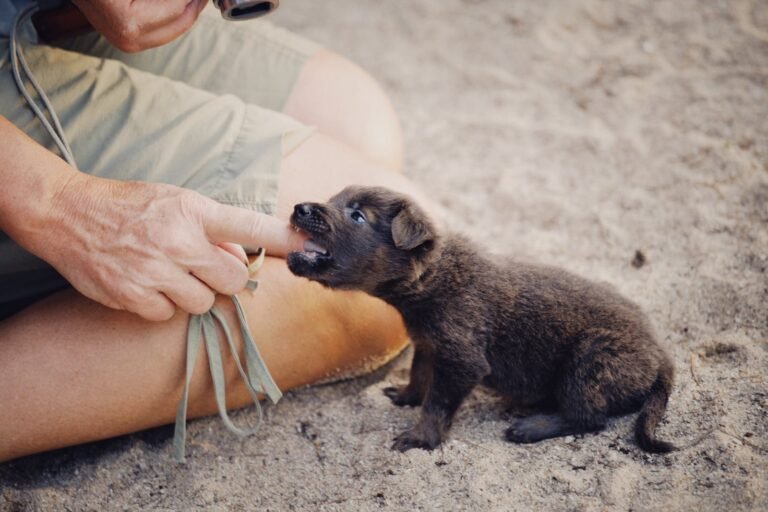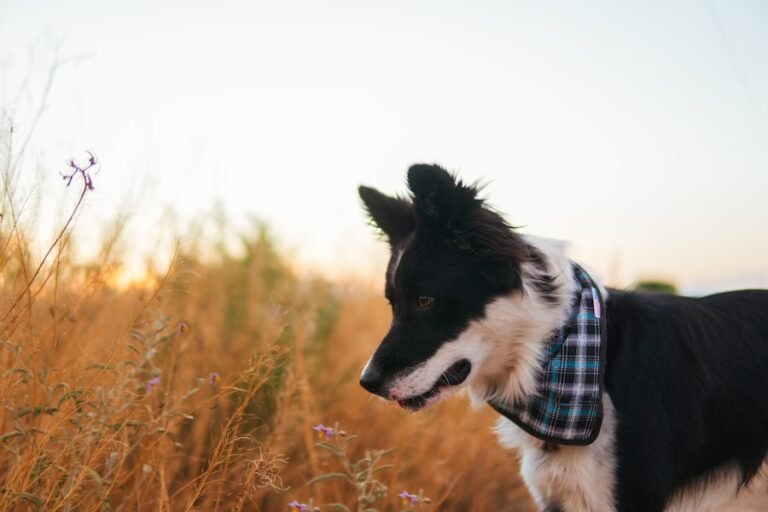Border Collies and Their Unique Herding Instincts: What You Need to Know
Border Collies are a highly intelligent and energetic breed of dog known for their exceptional herding abilities. They are medium-sized dogs with a distinctive black and white coat, and they have become popular pets and working dogs around the world. Border Collies have a strong instinct to herd, which is deeply ingrained in their genetic makeup.
The herding instinct in Border Collies is what sets them apart from other breeds. It is a natural behavior that has been selectively bred into them over centuries. This instinct drives them to gather, control, and move livestock, making them invaluable working dogs on farms and ranches. Even as pets, Border Collies may exhibit herding behaviors such as nipping at the heels of children or other animals.
Understanding the Origins of Border Collies as Herding Dogs
Border Collies have a long history as working dogs, dating back to the 18th century in the border region between England and Scotland. They were originally bred for their herding abilities, specifically for their skill in controlling sheep. The name “Border Collie” comes from their origins in the border region.
In the early days, Border Collies were primarily used by shepherds to manage their flocks. They were highly valued for their intelligence, agility, and stamina. These traits allowed them to work long hours in all weather conditions, often covering great distances to gather and move sheep.
The Science Behind Border Collies’ Herding Abilities
The herding instincts of Border Collies are not just a result of training or learned behavior; they are deeply rooted in their genetics. Scientists have discovered that certain genes play a crucial role in determining a dog’s herding abilities.
One gene that has been identified is called the “herding gene,” which is responsible for the intense focus and drive that Border Collies exhibit when herding. This gene affects the dog’s brain chemistry, making them more responsive to visual and auditory cues and enhancing their problem-solving skills.
Additionally, Border Collies have a unique brain structure that is specifically adapted for herding. Their brains have a larger prefrontal cortex, which is responsible for decision-making and problem-solving. This allows them to quickly assess situations and make split-second decisions while herding.
How Border Collies Use Their Instincts to Herd Livestock
Border Collies use a variety of techniques to herd livestock, depending on the situation and the type of animal they are working with. One common technique is called “eye,” where the dog uses intense eye contact to control the movement of the livestock. By staring at the animals, the Border Collie can influence their behavior and direct them where they need to go.
Another technique is known as “gathering,” where the dog moves around the livestock in a wide circle, gradually bringing them together into a tight group. This allows the Border Collie to control the movement of the animals and keep them in a confined area.
Border Collies also have a natural instinct to nip at the heels of livestock, which is known as “heeling.” This behavior mimics the actions of a predator and helps to keep the animals moving in the desired direction.
The Different Types of Herding Instincts in Border Collies
Border Collies can exhibit different types of herding instincts, which can vary from dog to dog. Some dogs may have a strong gathering instinct, while others may excel at eye work or heeling. It is important for owners to understand these different instincts and how they manifest in their dogs.
The gathering instinct is characterized by a strong desire to bring livestock together into a group. Dogs with this instinct are often excellent at controlling the movement of animals and keeping them in a confined area.
The eye instinct is characterized by intense eye contact and the ability to control the behavior of livestock through visual cues. Dogs with this instinct are often highly focused and can exert a great deal of control over the animals they are herding.
The heeling instinct is characterized by a natural inclination to nip at the heels of livestock. Dogs with this instinct are often very effective at moving animals in the desired direction, but it is important for owners to train them to control their nipping behavior.
Training Border Collies for Herding: Tips and Techniques
Training a Border Collie for herding requires patience, consistency, and a deep understanding of the breed’s instincts. It is important to start training at a young age, ideally when the dog is still a puppy, as this is when their instincts are most malleable.
One effective training technique is known as “balance training,” where the dog learns to balance between pressure and release. This involves applying pressure to the dog to encourage them to move in a certain direction, and then releasing the pressure as a reward when they comply.
Positive reinforcement is also key in training Border Collies for herding. Rewarding the dog with treats, praise, or playtime when they exhibit desired behaviors will help reinforce those behaviors and make the training process more enjoyable for both the dog and the owner.
Common Challenges When Training Border Collies for Herding
Training Border Collies for herding can come with its fair share of challenges. One common issue is overexcitement, where the dog becomes overly enthusiastic and may have difficulty focusing on the task at hand. This can be addressed through consistent training and gradually increasing the level of distractions.
Another challenge is teaching the dog to work at a distance. Border Collies have a strong desire to be close to their handler, which can make it difficult for them to work independently. This can be overcome through gradual desensitization and teaching the dog to respond to verbal and visual cues from a distance.
It is also important to be aware of the dog’s physical limitations. Border Collies are highly energetic and can easily become overworked or fatigued. It is important to provide them with regular breaks and ensure they have access to water and shade during training sessions.
Border Collies and Their Role in Modern Agriculture
Border Collies continue to play a vital role in modern agriculture, particularly in the herding and management of livestock. Their intelligence, agility, and natural herding instincts make them invaluable working dogs on farms and ranches around the world.
In agriculture, Border Collies are used to gather, control, and move livestock such as sheep, cattle, and goats. They can help farmers and ranchers with tasks such as rounding up animals, separating them into different groups, and guiding them through gates or into pens.
Border Collies are also used in conservation efforts to manage and control wildlife populations. They can be trained to work with non-native or invasive species, helping to protect native wildlife and ecosystems.
The Benefits of Owning a Border Collie with Strong Herding Instincts
Owning a Border Collie with strong herding instincts can be incredibly rewarding. These dogs are highly intelligent, trainable, and eager to please their owners. They thrive on mental stimulation and physical activity, making them excellent companions for active individuals or families.
Border Collies with strong herding instincts can also be valuable working dogs on farms or ranches. Their natural abilities make them well-suited for tasks such as herding livestock or managing wildlife populations.
Additionally, owning a Border Collie with strong herding instincts can provide a unique bonding experience between the owner and the dog. Working together as a team to accomplish tasks can strengthen the bond between human and canine, leading to a deeper level of trust and companionship.
Border Collies and Other Animals: How They React to Non-Livestock Animals
While Border Collies are primarily bred for herding livestock, they can also interact well with other animals. However, it is important to introduce them to non-livestock animals in a controlled and supervised manner.
Border Collies may have a natural instinct to herd smaller animals such as cats or small dogs. This behavior can be managed through training and socialization, but it is important to monitor their interactions to ensure the safety of all animals involved.
It is also important to remember that each Border Collie is an individual, and their behavior towards other animals may vary. Some dogs may be more tolerant or friendly towards non-livestock animals, while others may be more reserved or cautious. It is important to assess each situation and the temperament of the individual dog before allowing interactions with other animals.
The Unique and Fascinating World of Border Collies and Their Herding Instincts
Border Collies are a remarkable breed of dog with a rich history as working dogs. Their herding instincts are deeply ingrained in their genetic makeup, making them exceptional at gathering, controlling, and moving livestock.
Understanding the origins and science behind Border Collies’ herding abilities can help owners better appreciate and train their dogs. Training Border Collies for herding requires patience, consistency, and a deep understanding of the breed’s instincts.
Owning a Border Collie with strong herding instincts can be incredibly rewarding, both as a pet and as a working dog. These dogs are highly intelligent, trainable, and eager to please their owners. They can provide a unique bonding experience and enhance the lives of their owners in countless ways.
In conclusion, Border Collies are truly fascinating creatures with a unique set of skills and instincts. Their herding abilities are deeply ingrained in their genetic makeup, making them exceptional working dogs on farms and ranches. Whether as a pet or a working dog, owning a Border Collie with strong herding instincts can be a truly rewarding experience.









